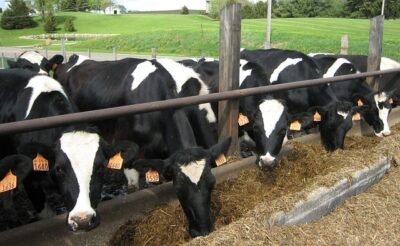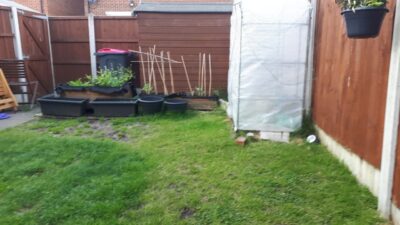Farm Visit – Eye Opener
In this Article...
It's not until you visit a UK farm that you realise how difficult it is for farmers to meet all the requirements and make a living from the land.
Last summer, as a complete novice, I had the unexpected opportunity to be shown around a farm in middle England by the current tenants whose family have been the tenant farmers since the 1920’s. With dry ancient river valleys the fields have areas which are chalky, others mildly acidic clay and some full of flint. Some fields are used for crops, others green manure, some for hay and some for low level grazing.
The family still hold on to the principles of old fashioned farming and working with nature including regular sowings of green manure plants including clover, chicory, coltsfoot and mustard. These are dug back into the soil to enrich and promote better crops. They farm mainly cereal, barley, wheat and oats with a few lambs from their small Herdwick flock. In addition, they are gradually ‘filling in the gaps’ and aiming to plant some new hedges to qualify for funding as green corridors for wildlife.
The harsh realities are that income from selling cereal crops for animal feed is negligible and since BREXIT 50% of funding was withdrawn almost overnight, so it is hard to make ends meet. These farmers actually live in the farmhouse which rare these days and saves them some housing costs but they can’t rent out or convert any dwellings to holiday lets to raise more income as subletting is not allowed in their contract.
Funding comes from the government’s Country Stewardship grants of which there are 259, but it is ring fenced to the usage of the land – GS2 for example means Permanent Grassland with Very Low Inputs for which funding of £151 per hectare per year is awarded. AB6 Enhanced Overwinter Stubble attracts over £522 per hectare per year and produces grain for wild birds over the winter. I researched after my visit and found that the subsidy system is complex, extensive and there are also terms which denote what ‘tier’ of farming you fall into and these impact which grants you are eligible to apply for. To me it is encouraging that the system seems built around the need to improve biodiversity and support wildlife, but I couldn’t help wondering how much more stretch there is in the elastic, especially for small farmers.
These farmers must comply with government, Natural England and DEFRA requirements at the same time as complying with the contract terms of their lease which includes that they alone must farm the land and there can be no subcontracting. On top of that, there are rules about when they should cut the hay – the 2nd week of July actually – but last year that was when the heavy rain arrived, so it was a far from optimal time to harvest. If they harvest early, according to their long term expertise, then ‘questions are asked’ and I’m unsure what consequence follows. In addition, the local landowner has recently stopped his annual deer population reduction programme (which is great in many eyes) so deer are naturally more plentiful than in the past, which leads to an increase in the unwanted grazing of their crops. That’s a lot of hoops to jump.
The farmer says that we are in a time of great change and that many farmers are now ‘development farming’. I think this means that the farm land is split into parcels, and then other farmers can pay to use it or perhaps it links with land planning and development. I’m not clear but change is certainly happening.
The overriding feeling of this farmer is that there will eventually be a return to traditional mixed farming methods where grazing and growing happen along side one another but how that is achieved or when remains to be seen.
This isn’t the only farm I came into contact with in 2023. I also holidayed at a sheep farm in County Durham. Here the farmer could only survive the funding cuts by converting barns to holiday lets. The sheep business is run at a loss but they are retained to visually enhance the countryside and attract visitors to the area.
Overall what struck me in both cases, was that farmers are having a very difficult time and having to be extremely versatile to stay afloat. I did also wonder about land use as in both cases there was little farming which led to producing food for the population – a relatively small number of sheep to market for many acres of land.
Ultimately, it made me appreciate the difficulties farmers are facing and if asked whether I could pay a little more per item and buy direct from local farmers, I would definitely say ‘Yes’. It was also wonderful to be having these conversations and interfacing with farmers thereby gaining a better understanding of the whole situation. Food price wars driven by the supermarkets come at a cost, predominantly to farmers, but ultimately to our heritage and potentially our future existence on the planet.
PFFA Admin team



